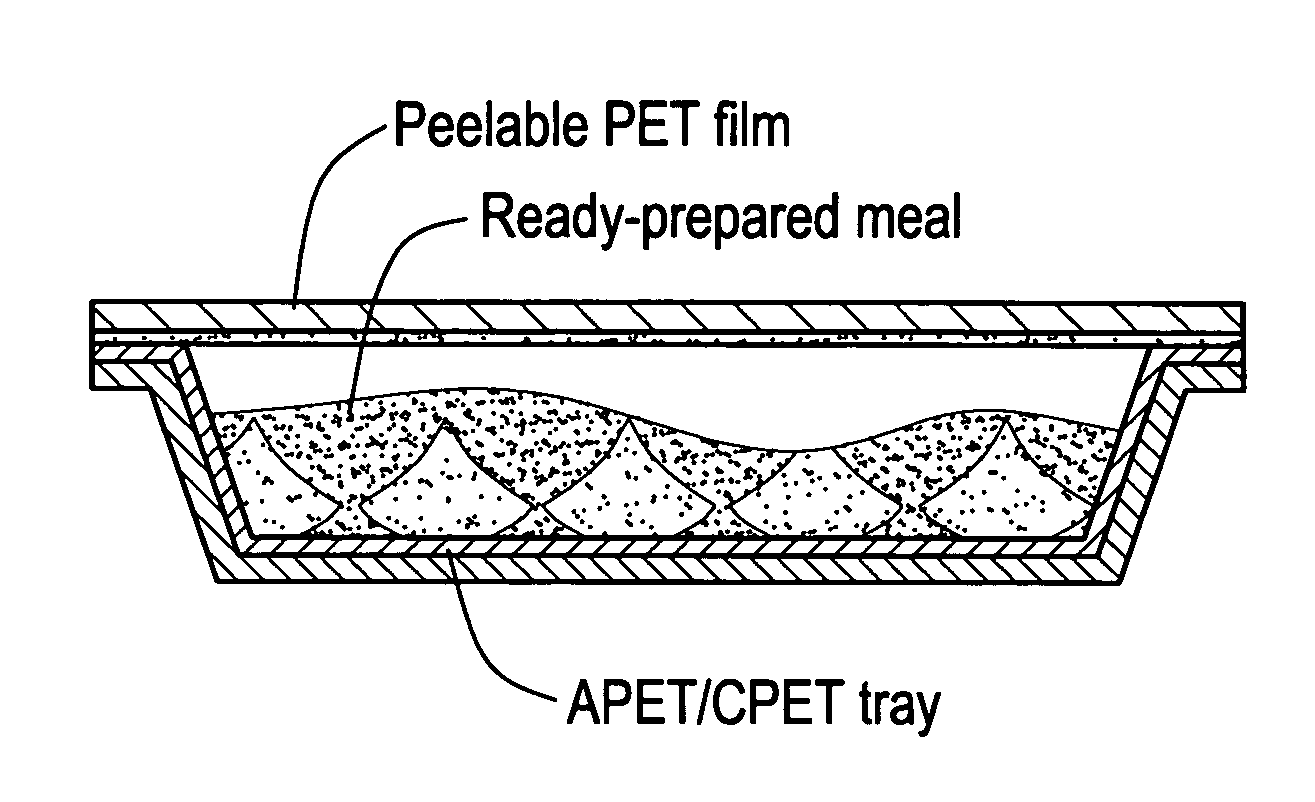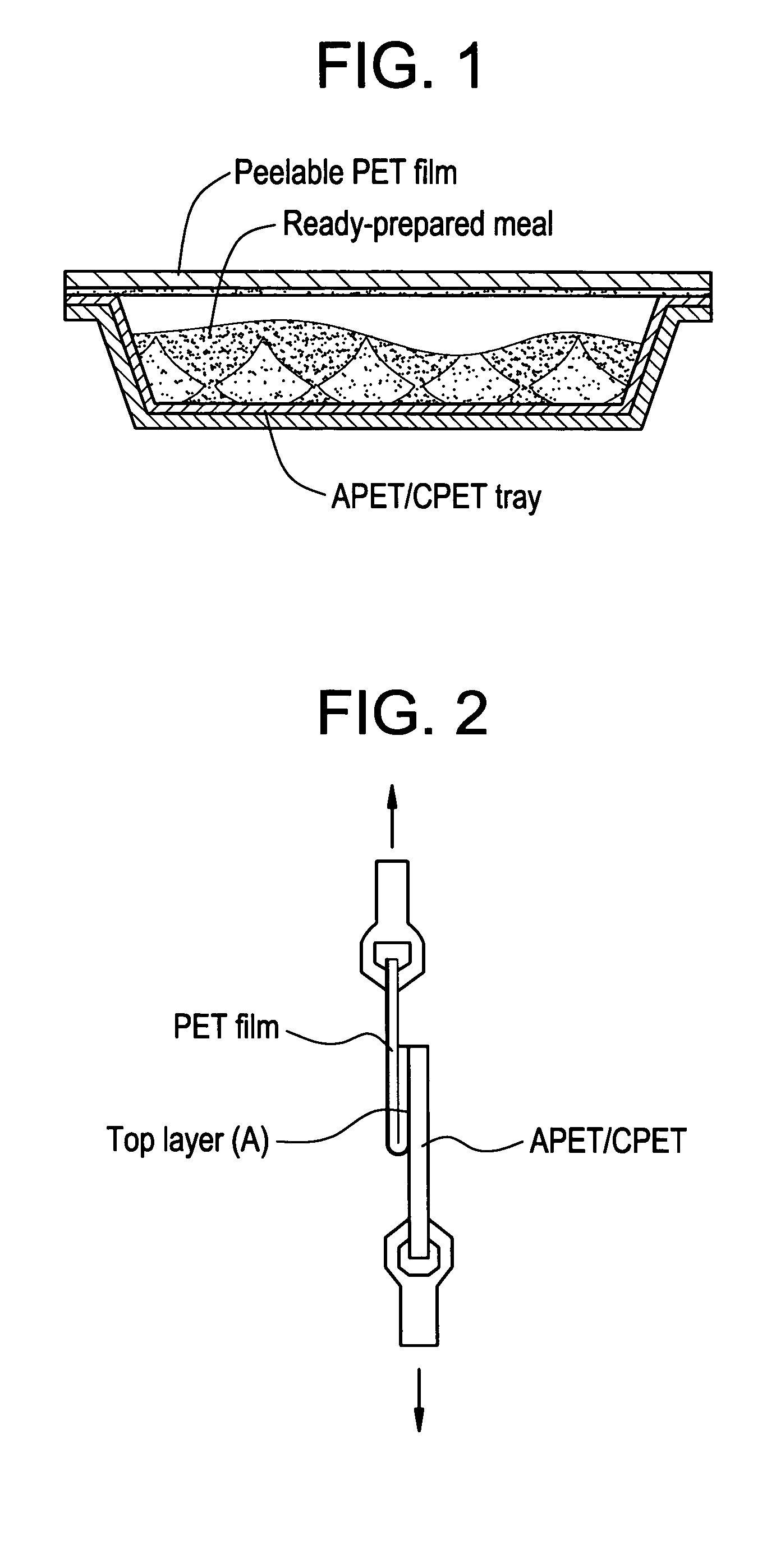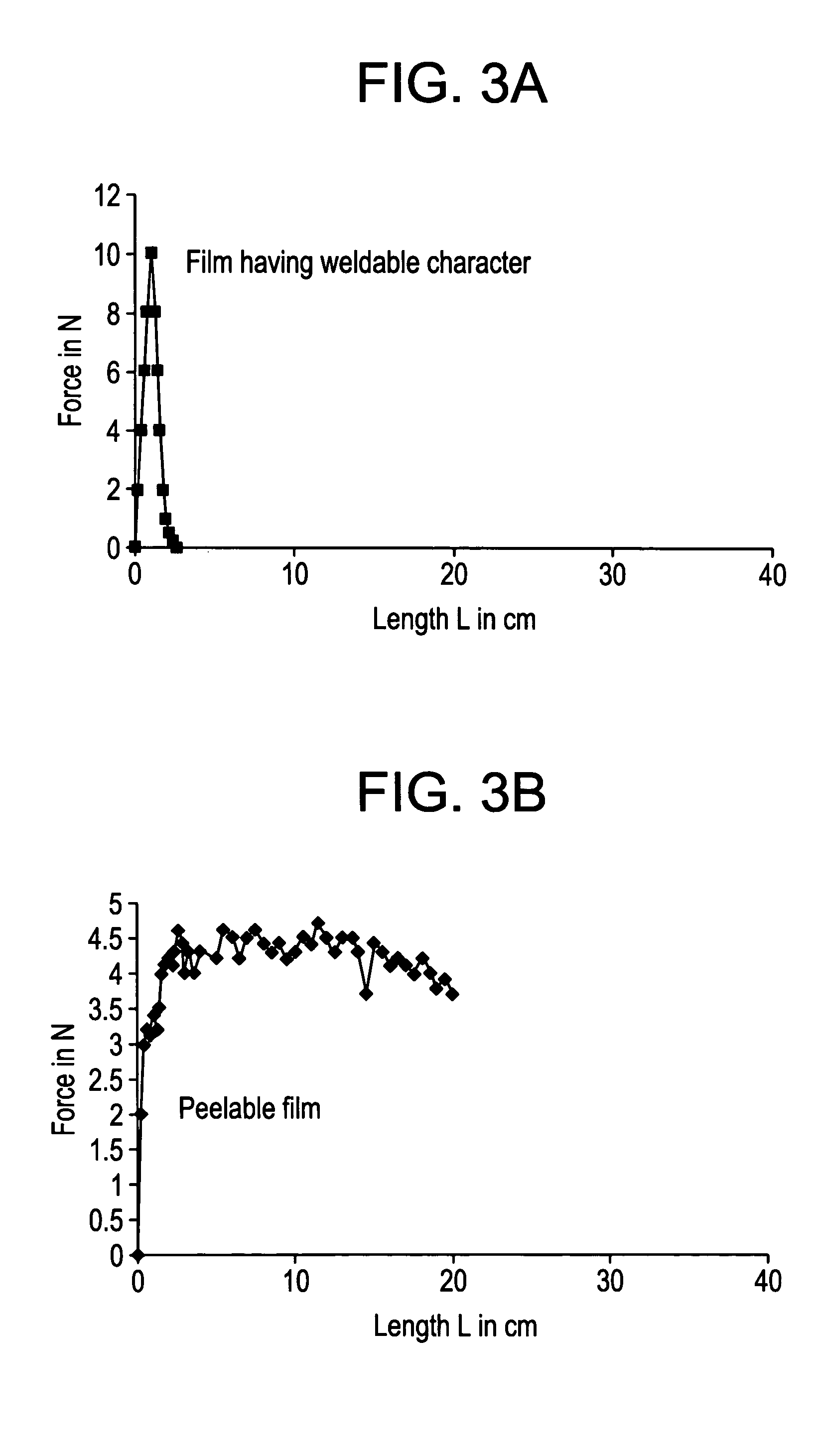Coextruded, hot-sealable and peelable polyester film having high peeling resistance, process for its production and its use
a polyester film, peelable technology, applied in the direction of magnetic recording, lamination, domestic applications, etc., can solve the problems of unfavorable film destruction on removal from the tray, force falling immediately back to zero, and affecting the easy opening of the packaging without tools
- Summary
- Abstract
- Description
- Claims
- Application Information
AI Technical Summary
Benefits of technology
Problems solved by technology
Method used
Image
Examples
example 1
[0161]Chips of polyethylene terephthalate were fed to the extruder for the base layer (B). Chips of polyethylene terephthalate and particles were likewise fed to the extruder (twin-screw extruder) for the nonsealable top layer (C). In accordance with the process conditions listed in the table below, the raw materials were melted and homogenized in the two respective extruders.
[0162]In addition, a mixture consisting of polyester I, polyester II and anti-PET polymer was prepared for the heatsealable and peelable top layer (A). In table 2, the particular proportions of the dicarboxylic acids and glycols present in the two polyesters I and II in mol % and the particular proportions of the components present in the mixture in % by weight are specified. The mixture was fed to the twin-screw extruder with degassing for the sealable and peelable top layer (A). In accordance with the process conditions detailed in the table below, the raw materials were melted and homogenized in the twin-scr...
example 2
[0173]In comparison to example 1, the composition of the mixture for the sealable top layer (A) was changed with otherwise identical film structure. The composition of the individual components remained unchanged in comparison to example 1. The mixture now consists of the following raw material proportions:[0174]polyester I=25% by weight,[0175]polyester II=60% by weight and[0176]anti-PET polymer =15% by weight.
[0177]As a consequence of the higher proportion of polyester II in the mixture, the process parameters were modified in the longitudinal stretching. The new conditions for longitudinal stretching are listed in the table below:
[0178]
Longitudinal stretchingHeating temperature 70–95° C.Stretching temperature 100° C.Longitudinal stretching ratio 3.8
[0179]The minimum sealing temperature of the film with respect to the APET side of APET / CPET trays is now 122° C. For all sealing temperatures, the films exhibited the desired peeling off from the tray according to FIG. 3b. The seal se...
example 3
[0180]In comparison to example 1, the composition of polyester II for the sealable top layer (A) was changed with otherwise identical film construction. The composition of the individual components in the mixture remained unchanged in comparison to example 1. The mixture used in top layer (A) now consists of the following raw material proportions:[0181]20% by weight of polyester I, identical to example 1[0182]70% by weight of polyester II, VITEL® 1912, (polyester, Bostik-Findley, USA; contains the dicarboxylic acid constituents azelaic acid, sebacic acid, terephthalic acid, isophthalic acid and further dicarboxylic acids approximately in the molar ratio 40 / 1 / 45 / 10 / 4, and, as the diol component, at least 60 mol % of ethylene glycol). The glass transition temperature of polyester II is approx. −1° C.[0183]10% by weight of COC (TOPAS® 8007, Ticona, Frankfurt; an ethylene / norbornene COC having a Tg of approx. 75° C.)
[0184]The process parameters in the longitudinal stretching corresponde...
PUM
| Property | Measurement | Unit |
|---|---|---|
| mol % | aaaaa | aaaaa |
| mol % | aaaaa | aaaaa |
| sealing temperature | aaaaa | aaaaa |
Abstract
Description
Claims
Application Information
 Login to View More
Login to View More - R&D
- Intellectual Property
- Life Sciences
- Materials
- Tech Scout
- Unparalleled Data Quality
- Higher Quality Content
- 60% Fewer Hallucinations
Browse by: Latest US Patents, China's latest patents, Technical Efficacy Thesaurus, Application Domain, Technology Topic, Popular Technical Reports.
© 2025 PatSnap. All rights reserved.Legal|Privacy policy|Modern Slavery Act Transparency Statement|Sitemap|About US| Contact US: help@patsnap.com



